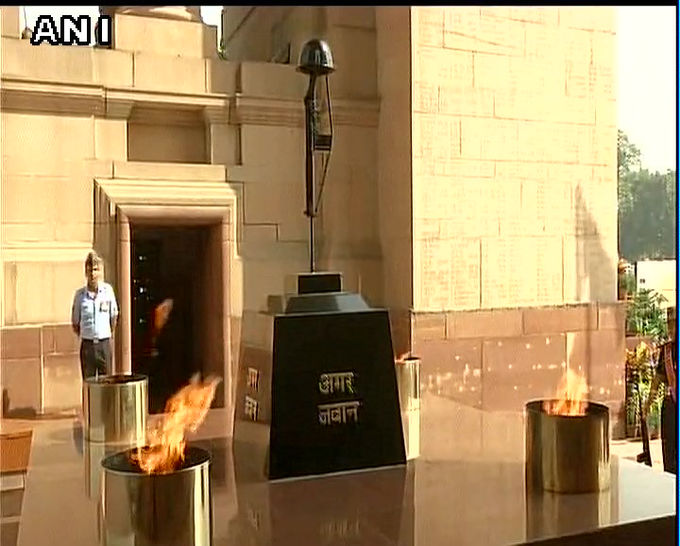The Amar Jawan
Jyoti at India Gate will be extinguished after 50 years in a landmark ceremony
on Friday and merged with the flame at the National War Memorial, days before
the country’s 73rd Republic Day.
Military officials said on Thursday that
the flame of the Amar Jawan Jyoti will be extinguished on Friday afternoon and
merged with the flame at the National War Memorial, which is just 400 metres
away on the other side of India Gate, news agency PTI reported.
Also Read | Amar Jawan Jyoti merger with War Memorial a ‘tragedy’, opposition says amid row
History
of Amar Jawan Jyoti
The Amar Jawan Jyoti, which translates to
Flame of the Immortal Soldier in English, was built after the Indo-Pakistani
War in 1971 to commemorate the martyrs of the war. It is located under the India
Gate at Rajpath in New Delhi.
It was inaugurated by then-Prime Minister Indira
Gandhi in 1972, who paid respects to the fallen soldiers on the country’s 23rd
Republic Day. It has since become a custom for Presidents, Prime Ministers along
with the chiefs of the three branches of the defence forces to pay their
tributes at the memorial on every Republic Day and other state occasions.
Also Read | Delhi govt recommends lifting of weekend curfew as COVID cases decline
The India Gate was constructed by the
British in 1921 by as a memorial to soldiers who died between 1914 and 1921
during the First World War and other conflicts. It was designed British architect
Edwin Lutyens.
The Amar Jawan Jyoti consists of a marble
pedestal with a cenotaph, with the phrase ‘Amar Jawan’ written on all four
sides in gold. It has a base of 4.5 meters square and 1.29 meters in height. On
top is an L1A1 rifle is placed on its barrel and is crowned by the helmet of
the unkown soldier.
Also Read | India: Revised COVID-19 guidelines do not recommend masks for kids below 5
The pedestal is flanked by four urns, one
of which has been continuously burning since the monument was constructed in 1971.
On occasions like Independence Day and Republic Day, all four flames are lit.







